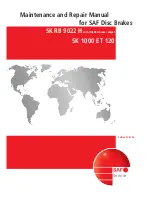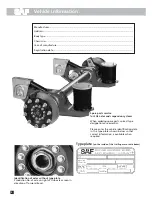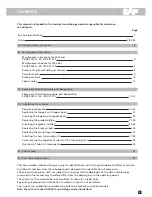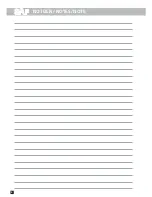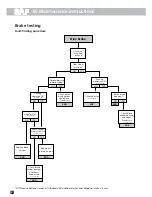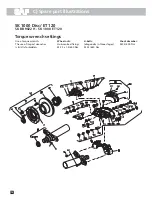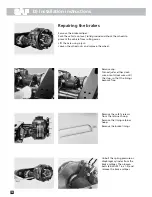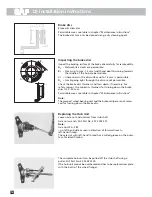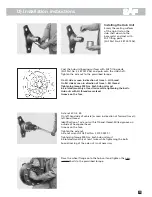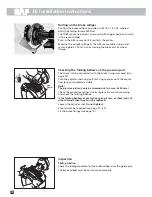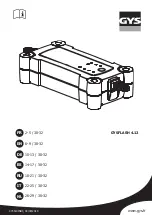
A) General safety instructions
Please observe the following safety instructions in order to maintain the operational and road safety
of your SAF axles and suspension systems:
1.
The wheel contact surfaces between the wheel disc and wheel hub and the wheel nut contact surface
at the wheel disc must not be additionally painted. The contact surfaces must be clean, smooth
and free from grease. Failure to observe this may result in the wheel coming loose. Any additional
instructions of the wheel manufacturer must also be observed.
2.
Only the wheel and tyre sizes approved by the trailer builder may be used. The tyres must always have
the specified inflation pressure.
3.
The brake systems of the tractor and the trailer/semi-trailer must be synchronised by means of a
tractor/trailer brake synchronisation not later than 5,000 km after the initial start of operation of the
trailer/semi-trailer in order to ensure a safe and uniform braking behaviour and uniform brake pad
wear. Tractor/trailer brake synchronisations should be carried out by appropriately qualified and
equipped brake workshops.
The use of an additional braking system, such as a trailer anti-jackknife brake is forbidden by law on
vehicles with type approval after January 1999.
4.
Before starting a journey, ensure that the maximum permissible axle load is not exceeded and that the
load is distributed equally and uniformly.
5.
On trailers with air suspension, ensure that the air bags are completely filled with air before starting
the journey. Incompletely filled air bags may result in damage to axles, suspension, frame and
superstructure and impair road safety.
6.
Ensure that the brakes are not overheated by continuous operation.
With drum brakes, overheating can result in a hazardous deterioration in the braking efficiency.
With disc brakes, overheating can result in damage to surrounding components – in particular the
wheel bearings. This can result in a significant deterioration in road safety, e.g. failure of wheel
bearings.
7.
The parking brake must not be immediately applied when the brakes are hot, as the brake discs and
brake drums may be damaged by different stress fields during cooling.
8.
Use the supports provided when loading and unloading in order to avoid damage to the axle.
9.
Observe the operating recommendation of the trailer builder for off-road operation of the installed
axles and suspension systems.
The SAF definition of OFF-ROAD means driving on non-asphalted / non-concreted routes, such as e.g.
gravel roads, agricultural and forestry tracks, on construction sites and in gravel pits.
Off-road operation of SAF axles and suspension systems not designed for the purpose may result in
damage and hence to an impairment of road safety.
10.
SAF axles and suspension systems require continuous care, service and maintenance in order to
maintain operational and road safety and to be able to recognise natural wear and defects in good
time.
The daily inspection of the trailer for road safety before starting the journey is one of the driver’s
obligations.
SAF recommends that at least the inspections and maintenance operations described on page 6 should
be carried out.
We recommend the use of original SAF spare parts.
A close-knit service network of SAF partner companies is available for the technical support of the SAF axle
and suspension systems and for the supply of original SAF spare parts (see rear cover or on the Internet
under www.saf-axles.com).
Updates will be published as necessary on the Internet under www.saf-axles.com.
5
Summary of Contents for SK 1000 ET 120
Page 4: ...NOTIZEN NOTES NOTE 4 ...
Page 33: ...NOTIZEN NOTES NOTE 33 ...

